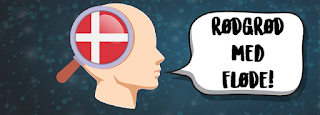Danish children struggle to learn their vowel-filled language – and this changes how adult Danes interact
Denmark is a rich country with an extensive welfare system and strong education. Yet surprisingly, Danish children have trouble learning their mother tongue. Compared to Norwegian children, who are learning a very similar language, Danish kids on average know 30% fewer words at 15 months and take nearly two years longer to learn the past tense. In “Hamlet,” William Shakespeare famously wrote that “something is rotten in the state of Denmark,” but he might as well have been talking about the Danish language.
Why is Danish so hard?
There are three main reasons why Danish is so complicated. First, with about 40 different vowel sounds – compared to between 13 and 15 vowels in English depending on dialect – Danish has one of the largest vowel inventories in the world. On top of that, Danes often turn consonants into vowel-like sounds when they speak. And finally, Danes also like to “swallow” the ends of words and omit, on average, about a quarter of all syllables. They do this not only in casual speech but also when reading aloud from written text.
Other languages might incorporate one of these factors, but it seems that Danish may be unique in combining all three. The result is that Danish ends up with an abundance of sound sequences with few consonants. Because consonants play an important role in helping listeners figure out where words begin and end, the preponderance of vowel-like sounds in Danish appears to make it difficult to understand and learn. "The Danish language is not suitable for speaking … everything sounds like a single word.”
Kids learn later, adults process differently
Before we could study the way Danish children learn their native language, we needed to figure out whether the peculiarities of Danish speech affected their ability to understand it.
When the children heard the consonant-rich “Find bilen!” – which sounds like “Fin beelen!” when spoken and means “Find the car!” – the toddlers would look at the car quite quickly.
However, when they heard the vowel-rich “Her er aben!” – which sounds like “heer-ahben!” and means “Here’s the monkey!” – it took the kids nearly half a second longer to look at the monkey. In this vowel-laden sentence, the boundaries between words become blurry and make it harder for the toddlers to understand what is being said. Half a second may not seem like much, but in the world of speech it is a very long time
But does the abundance of vowels in Danish also make it more difficult for children to learn their native language? It turns out that it does. In another study, we found that toddlers struggle to learn new words when these words are sandwiched between a lot of vowels.
Danish children do, of course, eventually learn their native tongue. However, our group has found that the effects of the opaque Danish sound structure don’t go away when children grow up: Instead, they seem to shape the way adult Danes process their language. Denmark and Norway are closely related historically, culturally, economically and educationally. The two languages also have similar grammars, past tense systems and vocabulary. Unlike Danes, though, Norwegians actually pronounce their consonants.
Not all languages are the same
There has been a longstanding debate within the language sciences about whether all languages are similarly complex and whether this might affect how people’s brains learn and process language. Our discovery about Danish challenges the idea that all native languages are equally easy to learn and use. Indeed, learning different languages from birth may lead to distinct and separate ways of processing those languages.
Linguists have looked at differences between languages before, but few have been concerned with the possible impact that such differences may have on the kind of processing machinery that develops during language learning. Instead, much of the focus has been on searching for universal linguistic patterns that hold across all or most languages. However, our research suggest that linguistic diversity may result in variation in the way we learn and process language. And if a garden-variety language like Danish has such hidden depths, who knows what we’ll find when we look more closely at the rest of the world’s approximately 7,000 languages?


Comments
Post a Comment